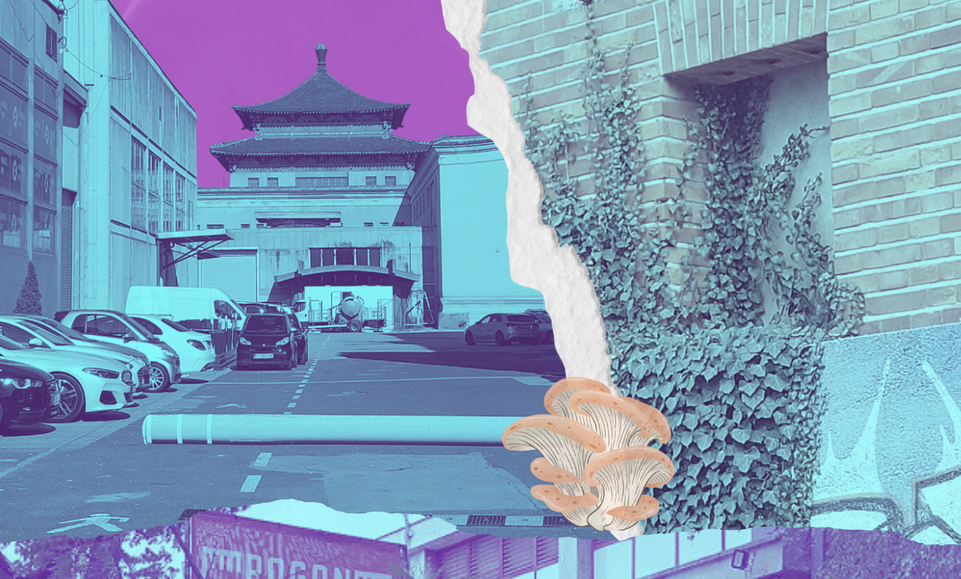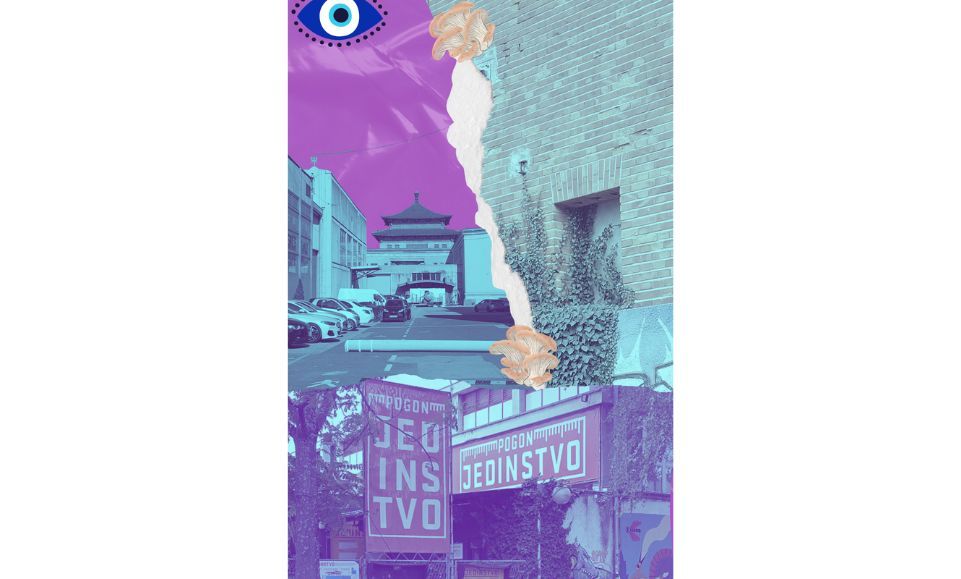Zagrebački Velesajam was one of the most surreal ghost fairs I have ever seen (not that I have been to many fairs, to be honest). It felt like something straight out of a science fiction novel. The tour was especially engaging thanks to the two incredible curators, Lana Lovrenčić and Sonja Leboš, who provided a detailed and insightful history of the fair and its significance.
The space itself is enormous; my first thought was that this should be the city within the city, rather than Klaonica. But what do I know? I am not really a citizen of Zagreb to fully grasp its urban needs.
Sonja made a fascinating point during the tour about squatting—how more people should experiment with temporarily using these spaces. Maybe we are too fixated on settling in one place when, in reality, movement could offer us fresh perspectives. After all, the Velesajam didn’t last forever either!

We also visited Klaonica, the old slaughterhouse and animal market. The site was magnificent, with two major forces at play—the creeping ivies reclaiming the space and the overwhelming number of cars. I couldn't help but wonder: if they all started at the same time, would they choke me to death?
It immediately reminded me of Prishtina—how quickly an empty space can be occupied by these death machines. Klaonica also brought to mind the brick factory in Prishtina and its uncertain future. The site has immense potential; it could host so many people and organizations. It’s vast enough to serve as an open space for contemporary theatre, dance, or even a performance school. Urban gardening, skate parks—so many possibilities. It could also be a space for children, enclosed enough for safe play. Perhaps there could be collaborations between schools and art organizations. I am not entirely sure, but one thing is certain—THE CARS MUST GO!
The first place we visited was Pogon Jedinstveno and Močvara, and what an absolute delight it was. Their stories were truly inspiring. Operacija Grad, the coalition of cultural organizations that actually functions, was incredibly motivating. The vision of Pogon’s director, Janja Sesar, is how cultural spaces should be for free; and how they can act as mediators between the municipal government and the independent art scene. She also said something that stuck with me [not a quote, rather how I understood it], that sometimes thinking particularly may not bring the best results, but thinking structurally, you tend to think of others as well and not just for yourself.
Overall, the first week left me with so many thoughts about the intersection of space, art, and community. It made me realize once again how much potential lies in these nearly abandoned spaces, and how crucial it is to rethink their use and learn about their (in)glorious pasts.

